
Overview
This article presents nine effective pricing strategies for direct-to-consumer (DTC) brands, designed to significantly boost profitability. Among these strategies are:
- Cost-plus
- Competitive
- Price skimming
- Penetration
- Value-based pricing
Each strategy is not only articulated with precision but is also bolstered by relevant examples and expert insights. This demonstrates how DTC companies can effectively leverage these approaches to enhance their market presence, align pricing with consumer perceptions, and ultimately drive sales growth in an increasingly competitive landscape.
Introduction
In today's fiercely competitive landscape, direct-to-consumer (DTC) brands face the imperative to master a complex array of pricing strategies that can drive profitability and foster customer loyalty. By delving into innovative approaches—such as cost-plus, competitive, and value-based pricing—companies can strategically align their tactics with consumer perceptions and market demands.
The pressing challenge, however, lies in identifying the optimal combination of strategies that not only attract customers but also ensure sustainable growth in an ever-evolving marketplace.
What pricing strategies will empower DTC brands to thrive in 2025 and beyond?
Parah Group: Comprehensive Conversion Rate Optimization for Pricing Strategies
Parah Group stands at the forefront of Conversion Rate Optimization (CRO), expertly tailored for direct-to-consumer (DTC) companies. By leveraging data-driven insights and consumer psychology, they craft effective cost strategies that help achieve the best pricing and substantially boost profitability. This comprehensive approach guarantees that cost strategies are seamlessly integrated with broader marketing initiatives, and average order values (AOV).
For instance, competitive costs for highly sought-after labels can enhance conversion rate forecasts by as much as 2%. Clients have reported remarkable improvements, including a 36% increase in ROI on advertisements, alongside significant rises in AOV and conversion rates. These outcomes underscore the vital role of well-structured value strategies in fostering growth.
Industry leaders emphasize that understanding value psychology and perceived worth is essential for DTC brands aiming to enhance customer loyalty and encourage repeat business. Therefore, businesses must continually evaluate and refine their sales strategies to drive revenue and improve conversion rates, effectively navigating the competitive landscape to achieve the best pricing for sustainable profitability.
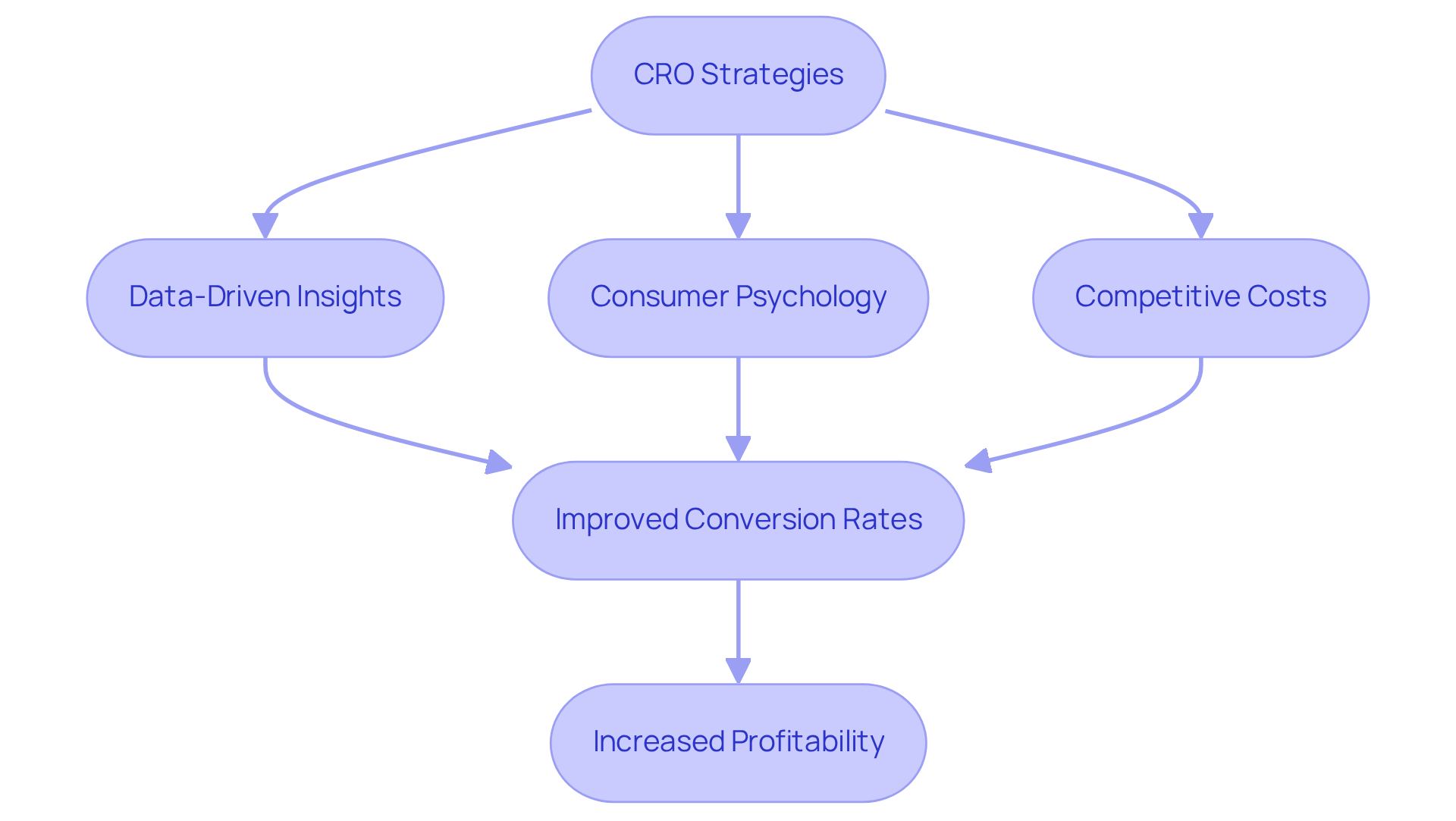
Cost-Plus Pricing: Ensuring Profitability Through Markup on Costs
Cost-plus pricing is a strategic approach that entails calculating the total cost of producing a product and adding a markup to guarantee profitability. This method empowers DTC companies to set prices that not only cover production costs but also secure a profit margin.
To determine an appropriate markup, it is crucial for companies to meticulously evaluate all costs, including:
- Materials
- Labor
- Overhead
This pricing strategy proves particularly beneficial in stable markets where expenses are predictable, enabling companies to maintain consistent profitability.
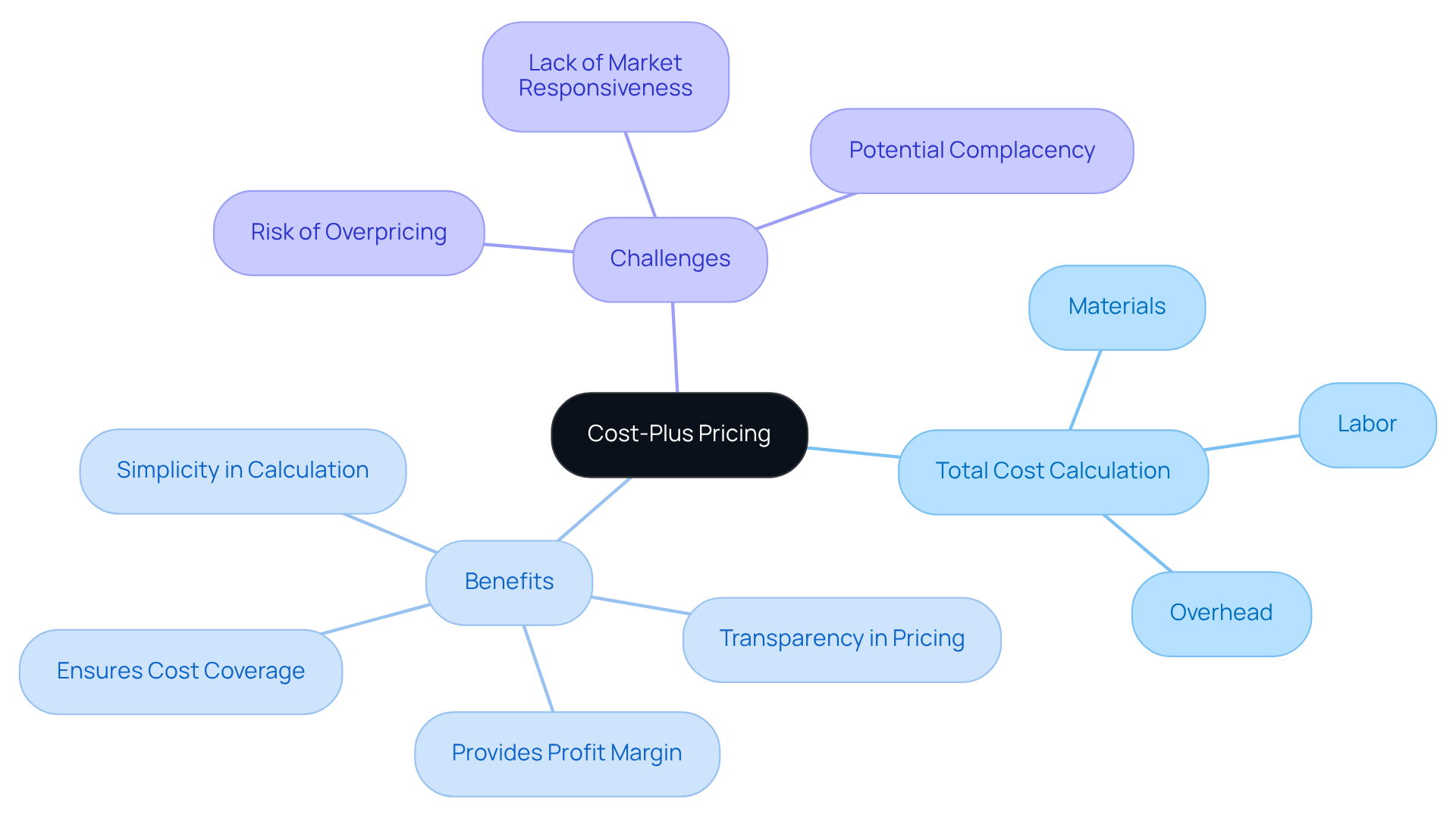
Competitive Pricing: Staying Relevant in a Crowded Market
Competitive pricing stands as a crucial strategy for DTC companies, necessitating adjustments to costs to ensure they offer the best pricing in response to competitors' pricing tactics. Regular evaluations of rivals are essential to ensure that we maintain the best pricing while still promoting profitability. For instance, companies may choose to implement the best pricing by pricing their products slightly lower than competitors to entice customers or align prices to maintain market share. This approach is supported by data indicating that consumers prioritize perceived value over the lowest price, making it imperative for companies to understand their Value Image Influencers.
Numerous successful examples exist within the DTC landscape. A prominent case is a DTC skincare company that adeptly leveraged competitive pricing data to modify its prices in reaction to market fluctuations, resulting in a remarkable 20% increase in sales. Similarly, a DTC footwear brand seized the opportunity presented by a competitor's inventory shortage by amplifying its advertising efforts for its own products, thereby capturing additional sales opportunities.
Market analysts underscore the importance of competitor analysis in achieving the best pricing strategies. As one expert highlighted, "Understanding how consumers think about prices is key to thriving in 2025’s competitive market." This insight emphasizes the necessity for DTC companies to employ tools like to gather real-time data on competitor prices and market trends. By utilizing web scraping, companies can automate data collection, ensuring they have timely insights to make informed decisions that bolster their financial strategies, thus remaining relevant and appealing to consumers in a competitive landscape. Moreover, DTC companies face challenges in executing flexible pricing strategies, such as the risk of customer migration to lower-priced retailers, which must be navigated with caution.

Price Skimming: Maximizing Initial Profits on New Products
Price skimming represents a strategic pricing approach wherein a company launches a new product at a premium price, subsequently reducing it as competition intensifies. This tactic proves particularly advantageous for direct-to-consumer (DTC) companies that unveil innovative products appealing to early adopters. By targeting consumers willing to invest more, companies can rapidly recover development costs and boost initial profit margins. Notably, technology giants like Apple have adeptly employed this strategy, introducing products at elevated prices to capitalize on initial demand before adjusting prices to attract budget-conscious consumers.
Statistics reveal that established brands utilizing DTC distribution are anticipated to account for over 80% of DTC eCommerce sales in the U.S. by 2025. This projection underscores the critical role of best pricing strategies in the evolving DTC landscape. Consumers often exhibit a pronounced willingness to pay a premium for new, innovative products, especially when they perceive added value. This consumer behavior highlights the potency of revenue skimming in maximizing income during the initial launch phase of a product. Marketing experts assert that when executed correctly, revenue skimming can significantly enhance profitability without alienating customers, provided that companies strategically time their price reductions.
Nonetheless, companies must remain vigilant regarding the risks associated with skimming, such as potential profit loss and diminished perceived value. ; delaying price reductions can push customers toward competitors, while premature price cuts may provoke dissatisfaction among loyal buyers. Numerous DTC companies have successfully implemented skimming strategies for new product launches, leveraging this approach to establish a premium market presence. For example, luxury fashion brands often debut new collections at high prices, gradually lowering them to broaden their customer base as the season progresses. This method not only amplifies initial sales but also cultivates loyalty among early adopters who value exclusivity.
In the realm of e-commerce, numerous successful examples of revenue skimming abound, with companies achieving substantial income growth through strategic cost management over time. The key to success lies in understanding consumer behavior and market dynamics, enabling firms to refine their pricing strategies to achieve the best pricing effectively. By leveraging revenue skimming, DTC companies can ensure sustained sales growth while optimizing their initial earnings.
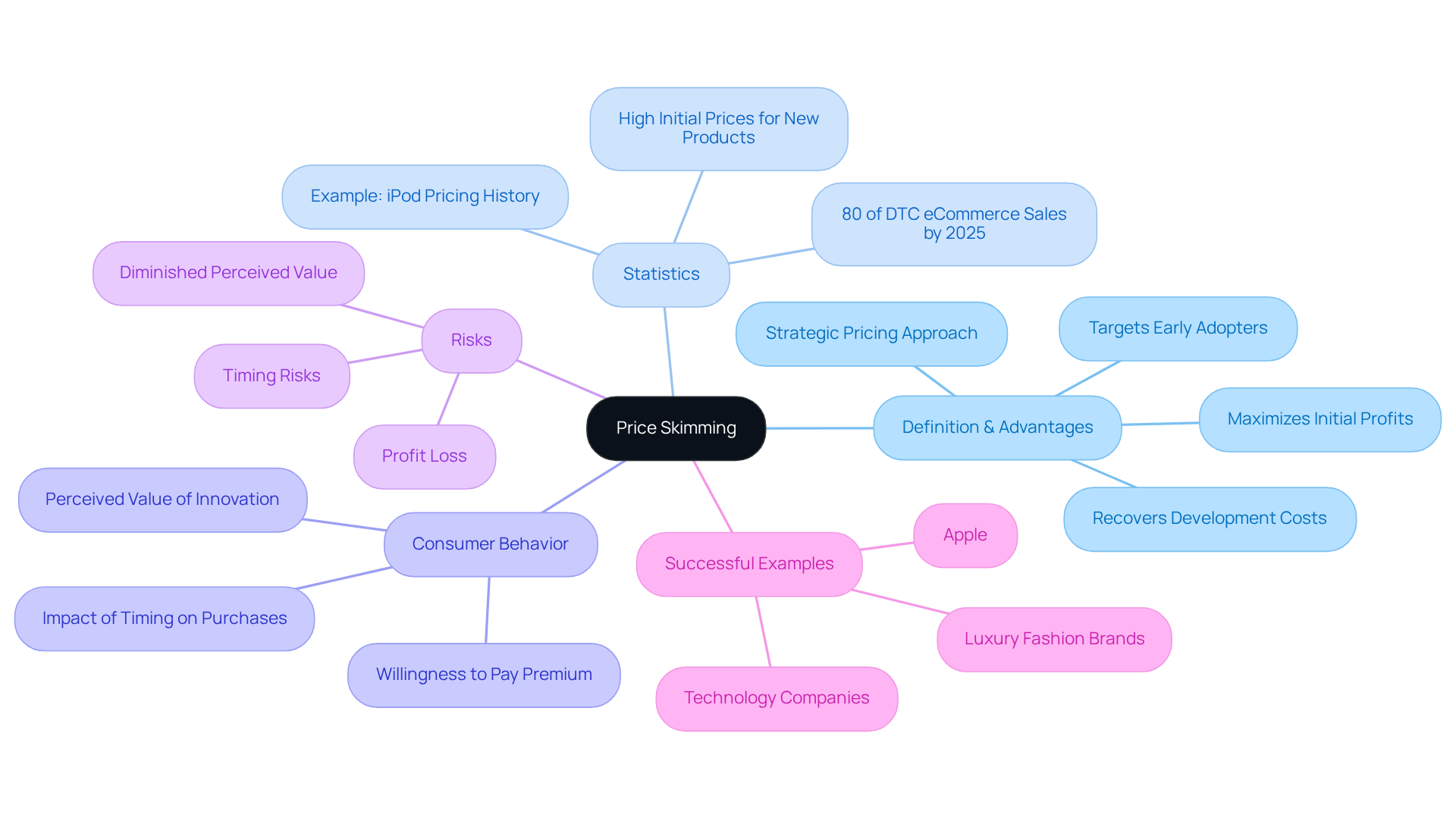
Penetration Pricing: Gaining Market Share Quickly
Penetration pricing represents a strategic approach whereby companies set an initial low cost for their products to attract customers and swiftly gain market share. This tactic proves particularly advantageous for new direct-to-consumer (DTC) companies entering competitive markets. By positioning their prices below those of established competitors, these brands can effectively draw in cost-conscious consumers, fostering loyalty and encouraging repeat purchases. Once a substantial market presence is established, companies can gradually raise prices to enhance profitability while maintaining customer trust and satisfaction.
The benefits of penetration strategies encompass:
- Accelerated customer adoption
- Economies of scale
- A competitive deterrent against established rivals
Numerous successful examples exist within the DTC sector, where companies like Dollar Shave Club and Netflix have effectively employed penetration strategies to disrupt their respective markets. Dollar Shave Club's affordable razors attracted a significant customer base, facilitating rapid expansion before adjusting prices as customer loyalty solidified. Likewise, Netflix's initial low subscription fees enabled it to cultivate a vast audience in the streaming market, ultimately leading to its dominance.
Nevertheless, DTC companies must navigate the challenges associated with penetration strategies, including:
- The maintenance of profitability under thin margins
- The potential risk of price wars
Industry leaders underscore the significance of this strategy in competitive landscapes. As noted, 'Penetration strategy is not merely a short-term tactic but a long-term strategic blueprint that prioritizes market share over rapid profitability.' This approach empowers DTC brands to erect barriers against competitors while ensuring in a constantly evolving marketplace. Furthermore, conducting thorough market analysis and remaining adaptable to adjustments are crucial for the effective implementation of penetration strategies, alongside evaluating performance through metrics such as customer acquisition cost and market share.
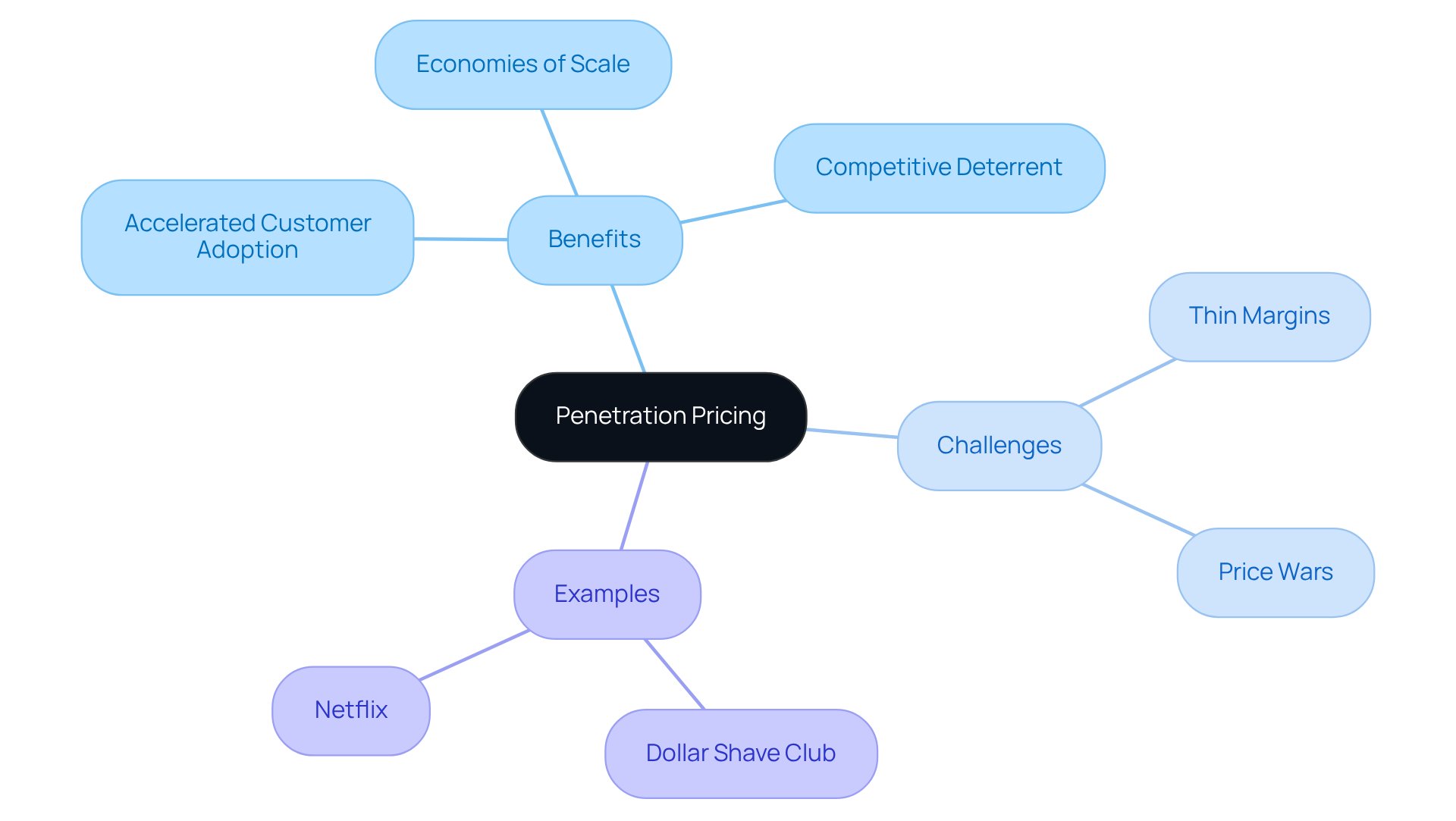
Value-Based Pricing: Aligning Price with Customer Perception
Value-oriented cost determination represents a strategic approach where costs are established based on the perceived worth of a product or service to the customer. Direct-to-consumer (DTC) companies that offer distinctive features or exceptional quality can leverage this strategy to command higher prices.
By thoroughly understanding customer desires and preferences, these companies can adjust their costs to align with the value they deliver, ensuring customers feel they are receiving a fair offer. This method not only enhances profitability but also cultivates customer loyalty, as consumers recognize and appreciate the greater value in their purchases.
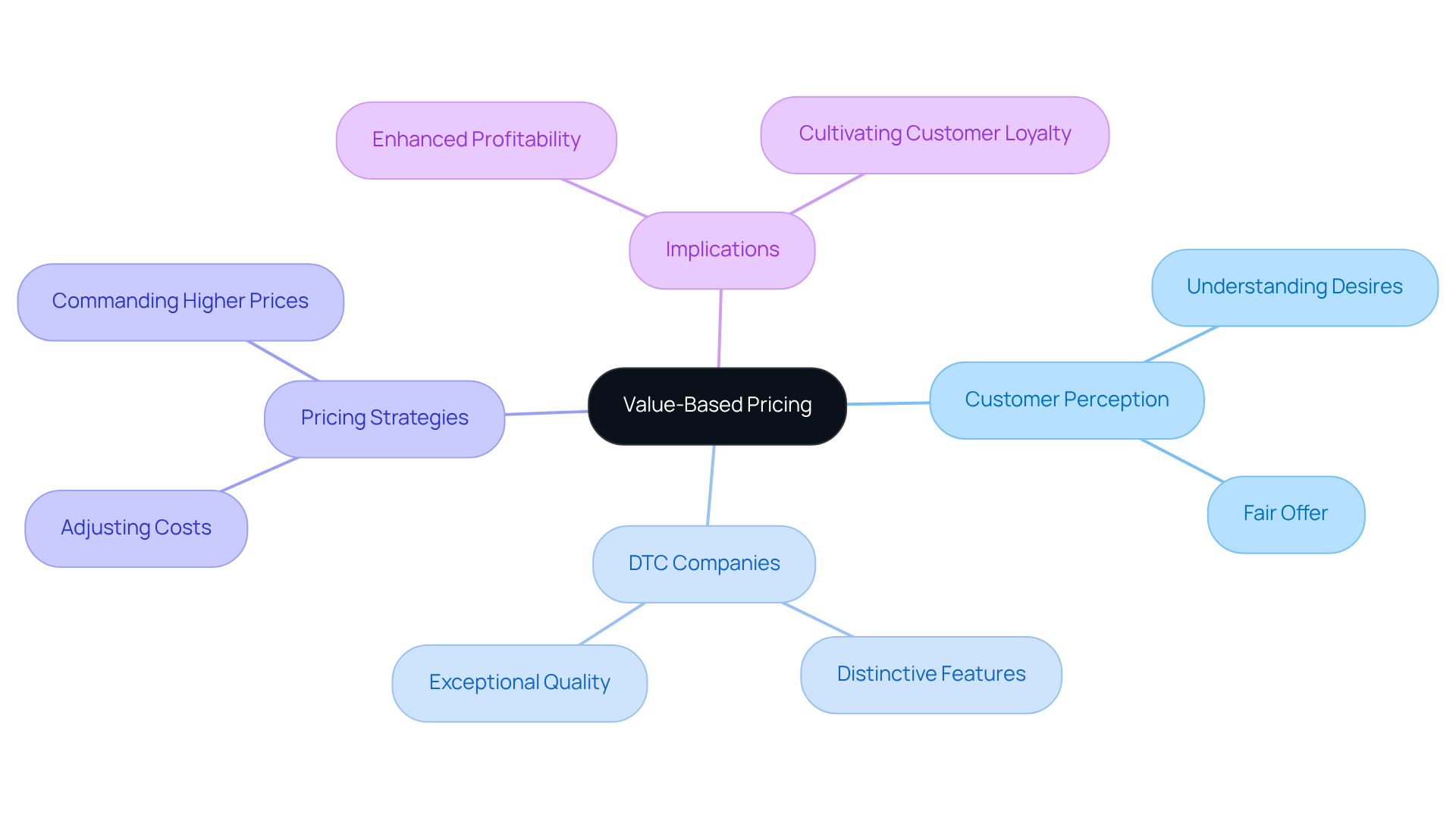
Aggressive Pricing: Outmaneuvering Competitors in the Market
Assertive cost strategies compel companies to offer the best pricing by setting their rates significantly lower than those of their competitors, effectively attracting clients and capturing market share. This approach proves particularly potent in competitive markets characterized by price-sensitive consumers. However, direct-to-consumer (DTC) brands must meticulously manage their capacity to achieve the best pricing without compromising product quality. While aggressive cost strategies can lead to heightened sales volume, they also require a readiness to adjust prices in response to competitive dynamics to maintain the best pricing and safeguard long-term profitability.
Industry specialists emphasize that establishing accurate costs is paramount; it profoundly influences a business's revenue and customer loyalty. For instance, retaining a customer costs up to five times less than acquiring a new one, underscoring the critical importance of customer loyalty within the framework of competitive cost strategies. Successful DTC companies illustrate that while aggressive pricing can yield immediate sales boosts, it is essential to balance this tactic with strategies that foster loyalty and trust among customers to ensure the best pricing.
Brands that effectively communicate the value of their offerings alongside the best pricing can mitigate the risks associated with lower margins. Furthermore, 57% of consumers identify high-quality products as the primary driver of their loyalty to a brand, highlighting the necessity for quality assurance even when implementing competitive pricing. Ultimately, the key lies in and competitive rates into a broader strategy that encompasses quality assurance and customer engagement, ensuring sustainable growth.
Moreover, loyalty initiatives encourage 83% of consumers to make repeat purchases, serving as a valuable asset for companies striving to enhance customer retention while navigating the challenges posed by competitive offers.
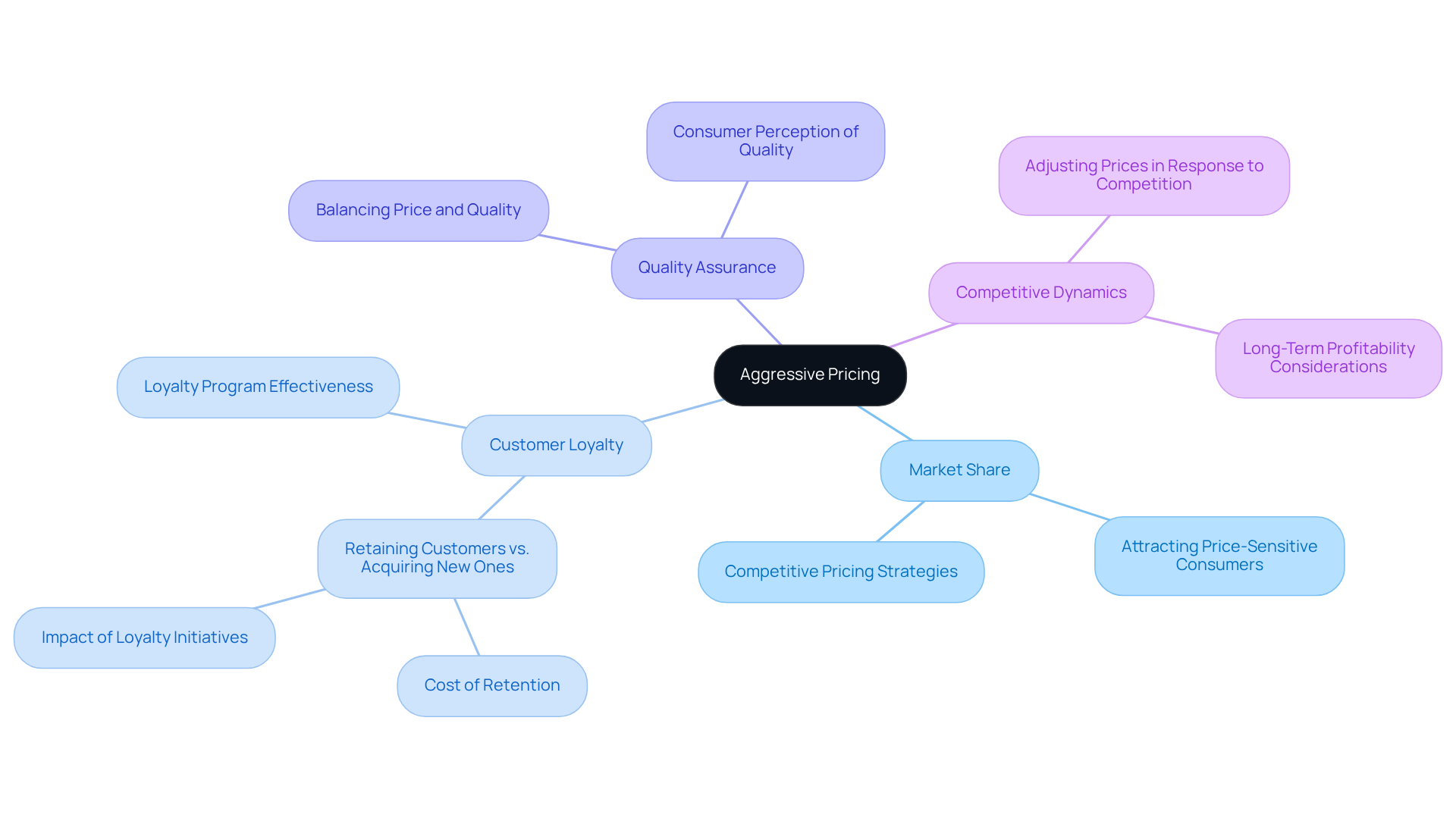
Co-operative Pricing: Collaborating for Market Presence
Co-operative cost-setting represents a strategic collaboration where companies unite to establish financial frameworks that benefit all participants. This approach proves especially advantageous for facing challenges in competing against larger counterparts. By synchronizing their cost strategies, these businesses can markedly enhance their market presence and foster a more competitive landscape.
Moreover, collaborative cost structures can include:
- Joint promotions
- Bundled offerings
These not only provide consumers with increased value but also ensure profitability for all involved enterprises. Evidence indicates that companies engaging in joint strategies often witness improvements in market visibility and sales performance, thereby reinforcing the effectiveness of this cooperative approach.
Industry experts assert that such collaborations can yield innovative cost strategies that resonate with consumers, ultimately promoting growth and sustainability within the marketplace.
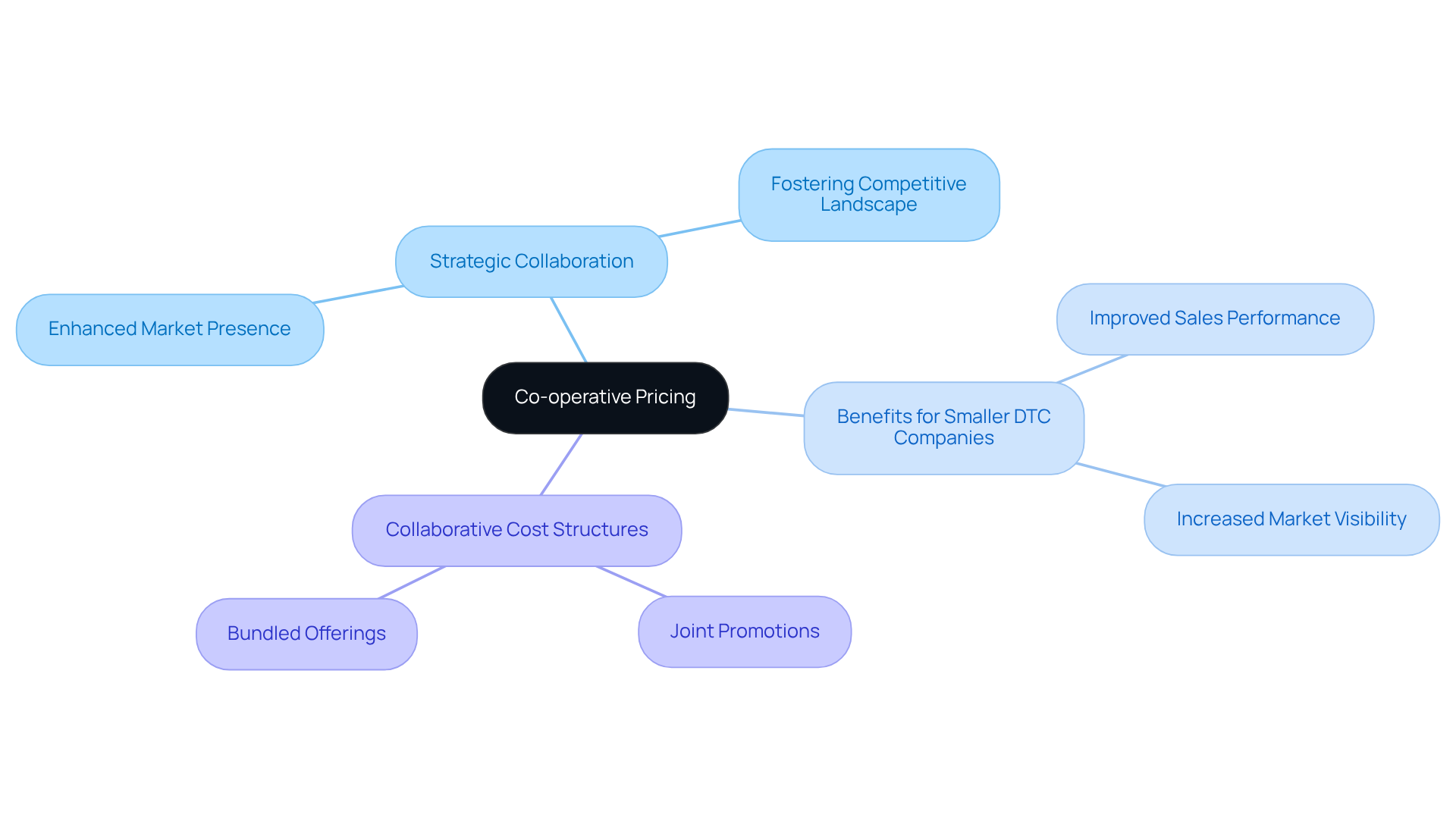
Dismissive Pricing: Positioning as a Premium Brand
Dismissive pricing represents a strategic approach where companies set their costs significantly higher than those of competitors, effectively positioning themselves as premium options. This tactic proves particularly advantageous for direct-to-consumer (DTC) companies that offer or possess unique features justifying the elevated price point. By emphasizing quality and exclusivity, these companies can attract consumers willing to pay a premium for perceived value. Not only does this strategy enhance the company's image, but it also enables higher profit margins, thereby reinforcing its market position.
Research indicates that companies adopting premium pricing can experience an increase in revenue per visitor and customer lifetime value, with many achieving gross profit margins of 65-75% after accounting for returns. Specifically, implementing premium pricing can lead to a 40-60% increase in client lifetime value. Successful examples include luxury timepiece brands like Patek Philippe, which leverage scarcity and exclusivity to command higher prices.
As branding expert Matt Buxbaum articulates, 'Price communicates far more than cost; it's a shorthand for quality, aspiration, and belonging.' He further emphasizes that 'Establishing the appropriate price for your direct-to-consumer product isn't merely about covering expenses and adding margin; it's a strategic choice that influences everything from your image perception to your customer acquisition economics.' By effectively communicating their unique value proposition, DTC companies can solidify their premium status and foster customer loyalty.
Moreover, companies that prioritize quality can achieve lasting success, with higher pricing potentially improving payment timeliness by 40%. It is imperative for DTC brand owners to assess their pricing strategies in alignment with these insights.
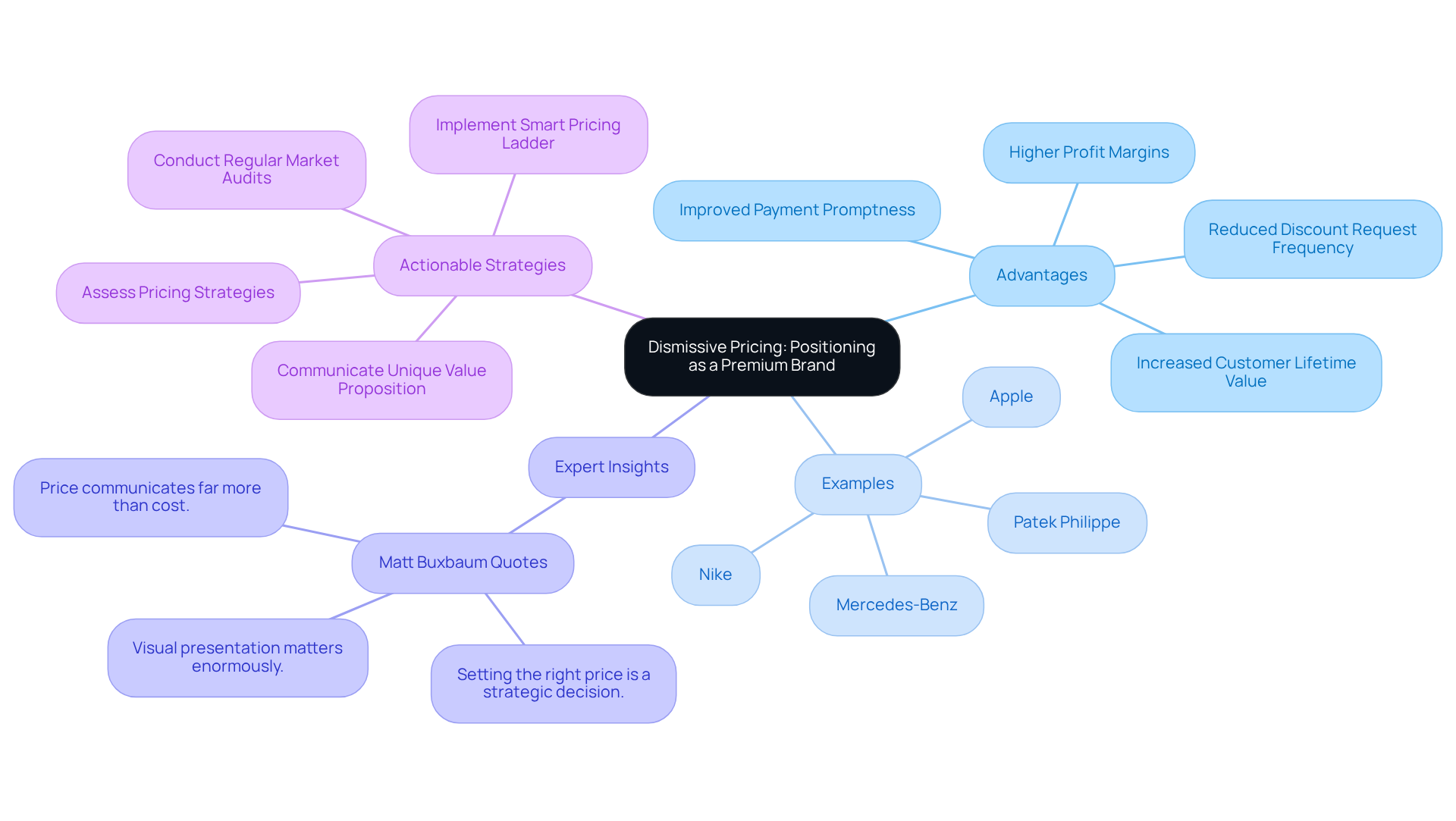
Combining Pricing Strategies: Tailoring Approaches for Market Conditions
Combining cost strategies involves integrating various approaches to create a customized model that effectively responds to market conditions. Direct-to-Consumer (DTC) companies can significantly improve their cost structure by utilizing a blend of cost-plus, competitive, and value-based strategies. For instance, a company might employ penetration strategies to establish a presence in a new market while simultaneously utilizing value-based methods for its premium products. This strategic flexibility empowers companies to adapt to evolving consumer behaviors and market trends, ensuring they remain competitive and optimize profitability.
Numerous DTC companies have effectively employed mixed cost strategies. A notable example is a fashion label that implemented flexible cost strategies, adjusting prices based on real-time competitor information and seasonal demand. This approach not only enhanced their market responsiveness but also resulted in a 20% increase in sales during peak seasons. Another instance involves a skincare company that merged competitive costs with value-focused strategies, enabling them to appeal to budget-minded consumers while maintaining premium rates for their high-end products.
Experts in cost strategy emphasize the advantages of this mixed method. As one strategist noted, 'A versatile cost structure enables companies to maneuver through market changes and consumer interests effectively.' To further enhance profitability and conversion rates, DTC companies should consider implementing , which can assist in identifying the best pricing and optimal price elasticity without compromising customer lifetime value. Furthermore, in the current landscape characterized by rising tariffs, a mixed cost strategy becomes even more essential for preserving margins and competitiveness. By leveraging a combination of pricing strategies and tools like web scraping to monitor competitor pricing, DTC brands can optimize their offerings, enhance customer satisfaction, and ultimately achieve the best pricing for sustainable growth.
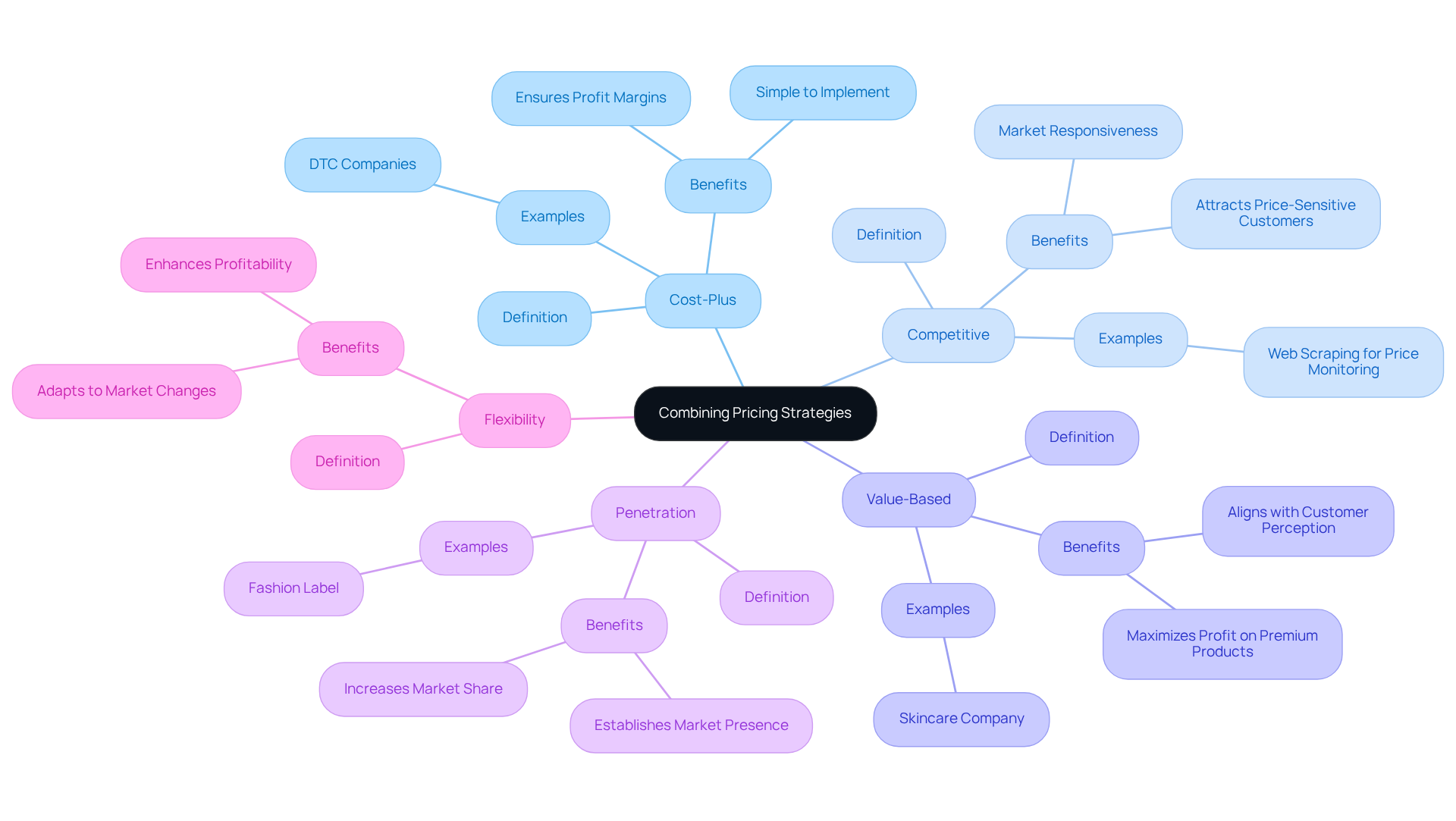
Conclusion
In the competitive landscape of direct-to-consumer (DTC) brands, employing effective pricing strategies is essential for maximizing profitability and sustaining growth. This article highlights nine distinct pricing strategies that can be tailored to meet the unique demands of the market, ensuring that brands not only survive but thrive. By understanding and implementing these strategies, DTC companies can strategically position themselves in a way that resonates with their target audience and enhances their overall market presence.
Key insights discussed include:
- The importance of cost-plus pricing for ensuring profitability.
- The relevance of competitive pricing in maintaining market share.
- The advantages of price skimming for maximizing initial profits on new products.
- The role of penetration pricing as a powerful tool for gaining market share quickly.
- The significance of value-based pricing to align prices with customer perception and foster loyalty.
- The emphasis on aggressive pricing and co-operative pricing, highlighting the need for brands to adapt to market conditions and collaborate for mutual benefit.
- The strategy of dismissive pricing that allows companies to position themselves as premium brands, appealing to consumers who prioritize quality and exclusivity.
Ultimately, the ability to combine and adapt these pricing strategies is crucial for DTC brands navigating an ever-evolving marketplace. By leveraging data-driven insights and understanding consumer psychology, companies can optimize their pricing models to enhance conversion rates and drive sustainable growth. Embracing a flexible approach to pricing not only boosts profitability but also fosters long-term customer loyalty, positioning brands for success in a competitive environment.
Frequently Asked Questions
What is the primary focus of Parah Group in terms of Conversion Rate Optimization (CRO)?
Parah Group specializes in Conversion Rate Optimization (CRO) tailored for direct-to-consumer (DTC) companies, utilizing data-driven insights and consumer psychology to develop effective pricing strategies that enhance profitability.
How does Parah Group’s approach to pricing strategies benefit DTC companies?
Their approach ensures that cost strategies are integrated with broader marketing initiatives, which maximizes conversion rates and average order values (AOV), leading to significant improvements in return on investment (ROI) for advertisements.
What are some reported outcomes from clients who implemented Parah Group's strategies?
Clients have reported a 36% increase in ROI on advertisements, along with significant increases in average order values and conversion rates.
Why is understanding value psychology important for DTC brands?
Understanding value psychology and perceived worth is crucial for enhancing customer loyalty and encouraging repeat business, which are essential for sustainable growth.
What is cost-plus pricing, and how does it work?
Cost-plus pricing is a strategy that involves calculating the total cost of producing a product and adding a markup to ensure profitability. It allows DTC companies to set prices that cover production costs and secure a profit margin.
What costs should companies evaluate when determining an appropriate markup in cost-plus pricing?
Companies should evaluate all costs, including materials, labor, and overhead.
What is competitive pricing, and why is it important for DTC companies?
Competitive pricing is a strategy that involves adjusting costs to offer the best pricing in response to competitors' pricing tactics. It is important for maintaining market relevance and profitability.
How can DTC companies effectively implement competitive pricing?
DTC companies can implement competitive pricing by regularly evaluating rivals, adjusting their prices slightly lower to attract customers, or aligning prices to maintain market share based on perceived value.
Can you provide an example of a successful application of competitive pricing in the DTC landscape?
A DTC skincare company increased its sales by 20% by leveraging competitive pricing data to adjust its prices in response to market fluctuations.
What tools can DTC companies use to gather data on competitor prices?
DTC companies can use web scraping tools to collect real-time data on competitor prices and market trends, which helps them make informed pricing decisions.
What challenges do DTC companies face with flexible pricing strategies?
DTC companies face the risk of customer migration to lower-priced retailers when implementing flexible pricing strategies, which requires careful navigation.
FAQs











